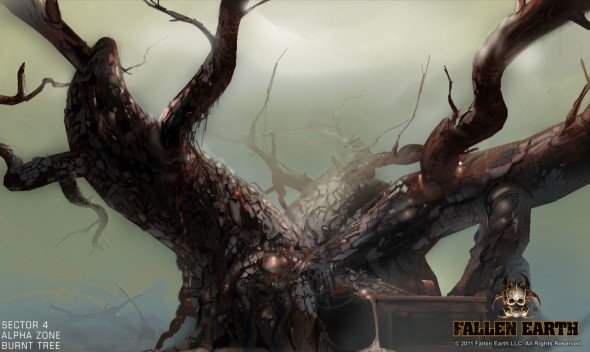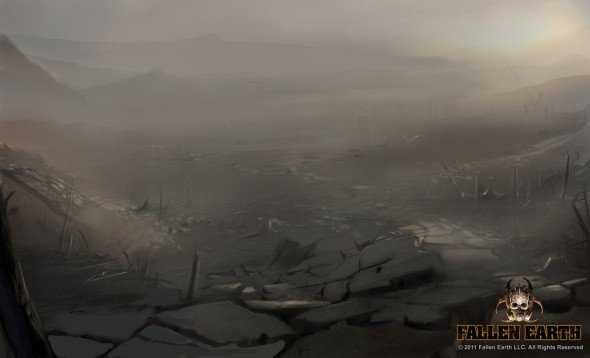
PC Gamer routinely features Developer Diaries: tales of what goes on behind-the-scenes in the development studios making your favorite games. This Dev Diary comes from Art Director Chris “Devo” Deavellar of the Fallen Earth development team, and provides insight into the development of the new zone being added to the game--Section 4.
Without further ado, here's Deavellar:
Sector 4 has been talked about for a while now, and we're getting close to the big unveiling. I'll admit that the art department is part of the reason why it's taken so long. We really wanted to push the technology and create an environment that looks different from what's been presented in Fallen Earth to date. In this dev diary, I'm going to give some background on our conceptualization process.
Up until this point, real-world designs like deserts, forests, and suburban-style towns have dominated the art style of Fallen Earth. In Sector 4 players will finally see some of the amazing and terrible things that uber-corporation Globaltech was up to before the apocalypse struck.

Globaltech was experimenting on all manner of plant life. But something went wrong: giant trees and vines started to grow uncontrollably, ripping apart buildings and contorting the ground into masses of choking roots. It's a great story, but capturing this idea properly in the game's art has been a major challenge. The idea of plant life running amok is one that could easily drift into D&D territory, and because we certainly don't want that, we had to be careful how we presented it.
We used a few real-world plants to inspire our designs. The first, kudzu, is a vine that grows up to twelve inches per day (fun fact: that's half-an-inch every hour). A second plant we used is a species of fungus called Cordyceps. Cordyceps invades the brain stem of an insect and then uses the insect both as food and transportation. We let our imaginations (and nightmares) run wild with these ideas. As a result, our plants aren't sentient, but they're still extremely aggressive. They are also horribly unnatural. Roots ooze blood-like sap. Large, cancerous pustules cluster on the sides of skyscraper-sized trees and where the bark has split, players can see meaty flesh underneath, instead of wood.

Another challenge in creating the look of Sector 4 was giving players a hint of what the place used to look like before the apocalypse and how it's changed afterwards. In Alpha County, it's clear that the natives fought back against the invading plants by scorching the ground to ash and putting up a giant wall to contain the plants that survived. The architecture also reflects this history: the masses of machinery that compose Globaltech's buildings would have looked impressive once, if a little unsettling. But now they are monstrosities. Barnacle-like shanties made from fragments of ruined steel, cables, and glass cling to the walls. It is clear that the people who have managed to survive here lead miserable lives and have no way of escaping.
Keep up to date with the most important stories and the best deals, as picked by the PC Gamer team.
Each county in Sector 4 will have its own unique look. The gray desolation of Alpha County will give way to slime and swampland in Epsilon County. In Theta, players will see the happy face that Globaltech put on for its investors and the general public. The architecture is a shining beacon of the future (although we already know how that failed to pan out). Lastly, in Omega County, players will see what happens when nature wins and the mutant plant-life completely takes over.

It was clear early on that we were going to need new tech to bring all of these environments to life. As a result, we created better water, better terrain textures and sculpting, new trees and also improved the lightstate technology. We're committed to delivering better graphics instead of just rearranging old elements that players have already seen.
I'm psyched for our players to see what's in store and I hope they enjoy the results.
PC Gamer is the global authority on PC games—starting in 1993 with the magazine, and then in 2010 with this website you're currently reading. We have writers across the US, Canada, UK and Australia, who you can read about here.


